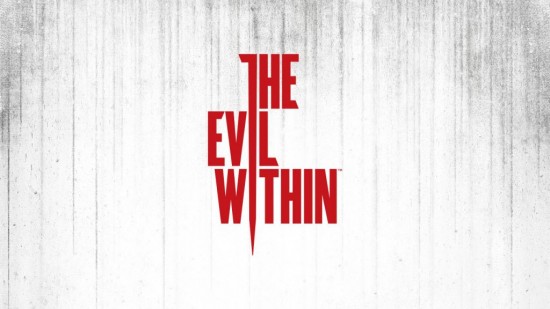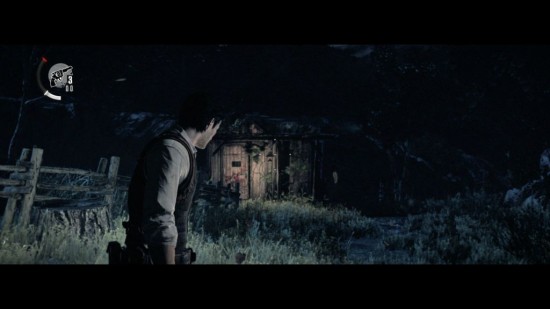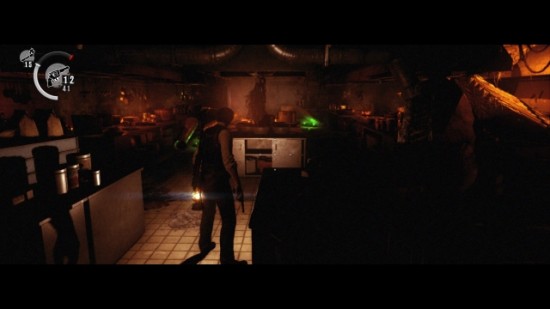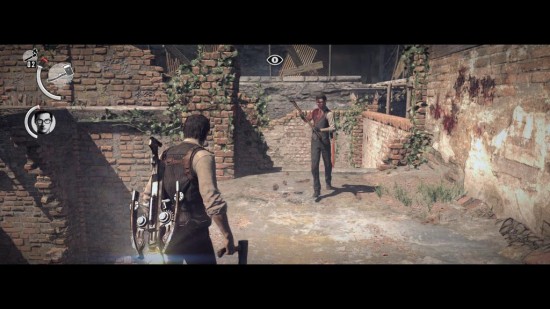Also On: PS4, PS3, Xbox 360, PC
Publisher: Bethesda Softworks
Developer: Tango GameWorks
Medium: Digital
Players: 1
Online: No
ESRB: E
When it comes down to it, I don’t like being scared. For the first 17 years of my life, I passed on the horror genre as a whole, thanks in no small part to the fact that so much of the genre is hinged on jump scares — cheap, annoying moments intended to startle an audience. Unfortunately for me, I’m fascinated with just about everything else the genre has to offer. In 2005, I finally broke the ice with what at the time was regarded as one of the best action games to come along in a while; I played the first 20 minutes of Resident Evil 4.
At the time, it was a big step for me. I even played through it eventually, years later. It’s not like I grew nerves of steel, but I did manage to divorce myself from the game’s atmosphere — or rather, appreciate the atmosphere’s execution before experiencing it myself. Games like Dead Space would rope me in, against my nature as a coward, and I learned to appreciate mechanics and design in horror games — preventing them from psyching me out.
So what does this have to say about The Evil Within? For me, and I imagine the majority of players, we’re here for a great game. Is it scary? Does it have to be? After my jumpiness has fatigued in the first hour of a horror game, I can’t tell anymore. One thing is for sure, it’s the closest thing we’ve got to Resident Evil 4 this generation, but that game almost 10 years old. It seems like the real question is how well does that gameplay model hold up against a little tweaking and modern design?
I won’t talk about the story, except to say that its setting gives license to get as weird and psychological as a Resident Evil gameplay model could accommodate. The main character of Sebastian Castellanos, along with supporting cast, feel a little rough around the edges for dialog and voice acting, but so much so that I’m not sure if they’re bordering on parody. For me, this 100% character grit is charming and somewhat self-aware, so I ended up having fun with the cast and story. The paranormal dressing also allows for tons of cool little one-off surprises and transitions to take advantage of the liberties The Evil Within grants itself. Remember Shadows of the Damned? It’s doing things like that, but with gravitas.
The Evil Within is apparently a return to survival horror, which comes through clearly in the gameplay and tone. Players will also be reminded by loading screen hints that it’s better to avoid enemy conflict at times — a piece of advice complimented by the sparse ammo and the firepower it presents. That, along with the fact that even the weakest enemy types often won’t go down with a headshot (prevailing with half of their noggin blown off), will manage to keep players on their toes when it comes to dealing with all the zombies or whatever they are.
Enemies aren’t necessarily bullet sponges, but given that many will stand back up after being knocked down, the art of strategy comes into play when in combat. Headshots will be more effective, and the use of matches to one-shot a downed enemy (and if you’re lucky, the guy standing next to him) adds a thin-yet-meaningful layer of utility to Sebastian’s options in combat. This feels right at home in a game where “survival” is the first word in its genre, and making decisions about how to most effectively approach combat is at the forefront of players’ minds.
As a counterpoint, players are given the upper hand in the ability to sneak around behind everyone’s backs. Stealth as a mechanic actually comes into play more often than I would have expected for a traditional horror game, and in certain instances becomes a necessity in order to avoid a flood of alarmed enemies. It feels rewarding, as well, to get the jump on enemies in a horror game for once.
The Evil Within ultimately feels like a breath of fresh air due to the fact that it’s a game seemingly designed 10 years ago. We’re smashing statues for special keys, using health items instead of regenerating HP, finding new weapons in special cases, and returning to an intermittent save location for upgrading them. Levels are linear and tightly designed with pacing in them, where deliberate scenarios are whipped up to tell a story as you play, and occasionally open up to a small environment for exploration and puzzle solving.
Broadening Sebastian’s combat abilities with the use of matches and stealth kills, however, empowers players in a way that survival horror typically doesn’t. This is where the game finds itself between all-out action and a helpless escape sim. The tension and terror in Evil Within come from encounters with an enemy that either you can’t kill, or one that will take you out in a few quick swats. Even this can change over time, as the game opens with a section featuring one such enemy which will go on to appear later in the game as an enemy which can be killed with a little elbow grease.
What keeps The Evil Within fresh isn’t that it’s old-fashioned, but in how it handles that angle. The save room, for instance, is reminiscent of the PT demo that horror fans have come to adore, in that it’s a re-used environment that is constantly being altered to certain effects, either highlighting Sebastian’s mental state or directly subverting player expectations of a safe or trustworthy environment. If this game has a strong suit, it’s attention to detail.
The game’s failings come later in the game, however, as I found myself impatient with the endgame sections. The last few hours seemed like an exhaustive exercise in trial-and-error, which was evident in the autosave and frequent checkpointing that seemed to be positioned in areas that would result in repeated death upon failure. The Evil Within also attempts the traditional boss gauntlet, along with a little horde mode action in its final stretches, which unfortunately reveals the combat to be unsuitable for such an ordeal. While it’s not impossible to complete these sections, these sections feel more like a traditional obligation rather than a smart use of an aged gameplay structure which is tailored to fit the game it’s set in. This is surprising when considering how aware of its heritage that the majority of The Evil Within appears to be, and even more disappointing in that light. A game like this should end on a high note, instead of struggling to implement unbalanced enemy encounters.
It’s also not a game that I would call technically sound, but I’m waiving any grievances with the light performance issues in favor of the amazing production and delivery the game is wrapped in. I’d say they’re two halves of a whole, where the game is obviously a product of designing for the previous generation of hardware, and that its vision is so up to snuff that it’s worth playing regardless of technical hiccups. On top of this are the hit-or-miss game assets, with plenty of low-resolution textures and character models dropping by to remind us that parts of this game are stuck in the past, and definitely in a bad way.
The sound direction and art are some of the strongest in a game this year, and it’s worth noting again the wide variety of environments. I never found myself fatigued from any themes or settings, although some are more clearly inspired than others, and revisiting sections like the forest in the early throes would have been a-okay with me.
Should we talk about the self-imposed letterboxing the game uses? For me, it obscures what needs to be offscreen in order to keep players wary of their surroundings. I like that games are using style choices that alter the approach players may take to playing,, and in my experience it added a layer of personality.
Rarely do I find myself looking forward to returning to a game I’m reviewing, but for the majority of The Evil Within, I was always interested in what my next sit-down would present. Is it scary? Not hardly. The tension is present in sections where you could be one-shotted from an overpowered enemy, but that’s a real-life anxiety that happens to work well in a horror game. I found myself looking forward to seeing more bitchin’ transitions, gore, and one-off psychological elements sprinkled in to mess with the player (which sadly dropped off after the first third).
In short, The Evil Within is entertaining. What shortcomings it had were overcome by the fact that for the 17 hours it lasted, I rarely found myself bored or irritated with its gameplay. It doesn’t have the gunplay and all-out action of Resident Evil 4, and it’s not as unsettling or oppressive as Silent Hill, but rather sits between the two in a comfortable place that offers a little of what each do best in a blend of gameplay that isn’t really comprised by either end of the spectrum. The few times that The Evil Within stumbles into the limitations of this balancing act never managed to bring down the experience as a whole. This makes for a satisfying campaign supported by thoughtful use of traditional design. It’s worth playing through at least once — and if you’re into it, again with New Game +.







